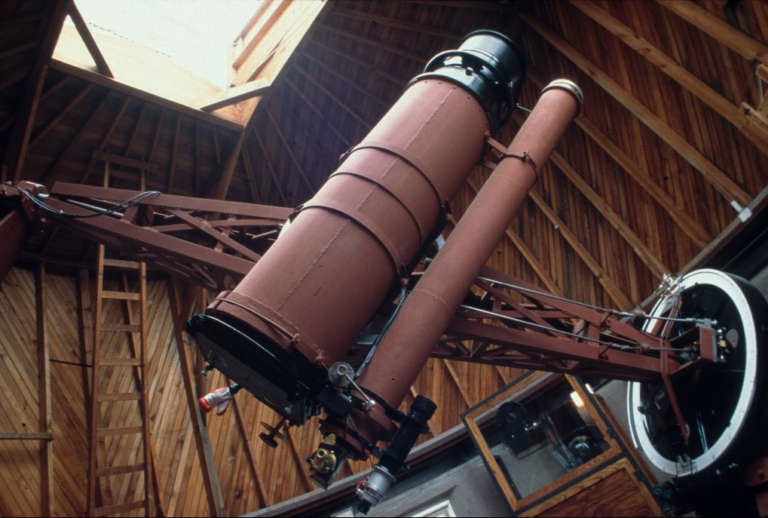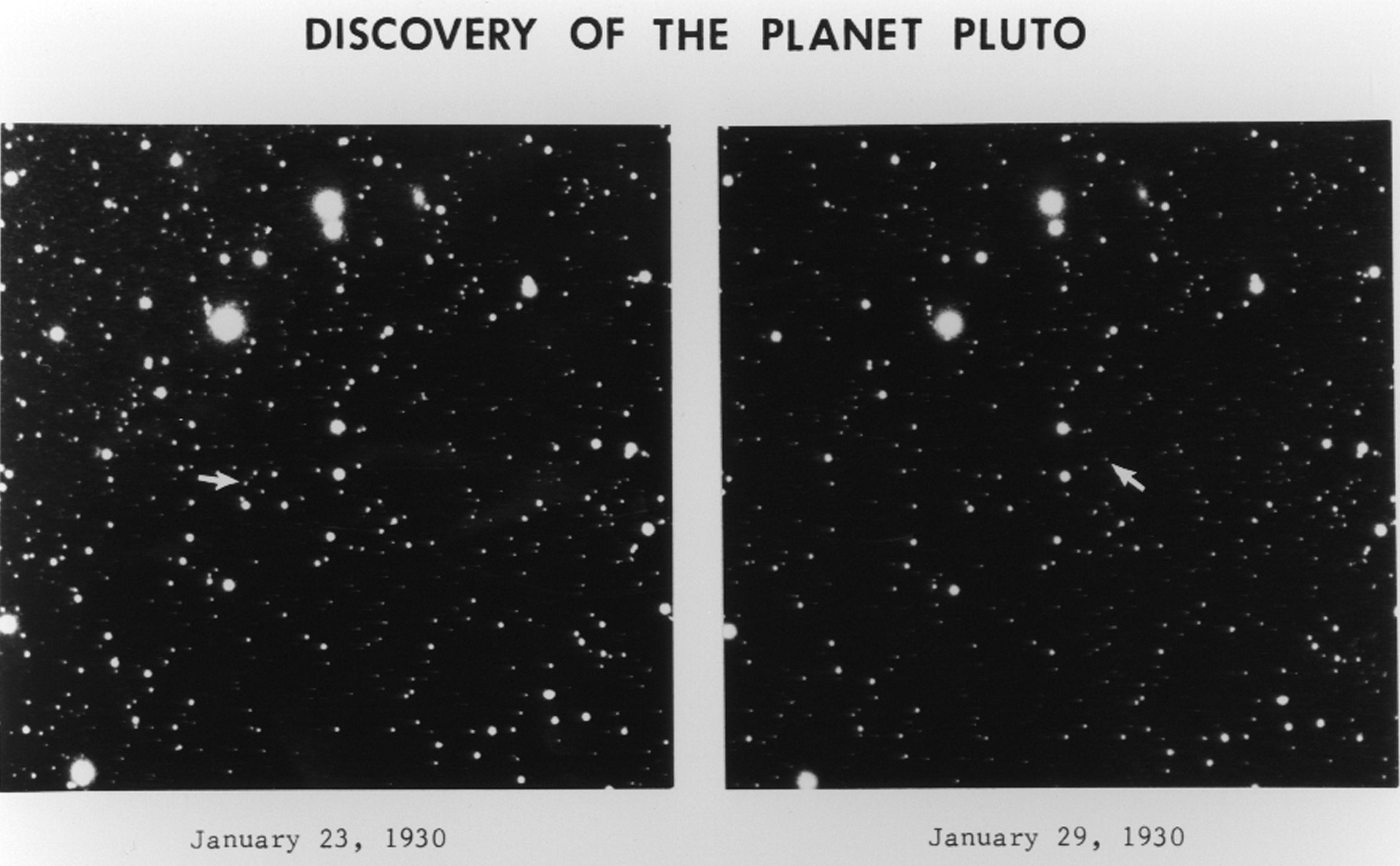Amir Alexander • Feb 15, 2005
The Discovery of a Planet, Part 4: Clyde's Search
In 1928 twenty two year old Clyde Tombaugh lived on a farm with his family near Burdett in western Kansas. The oldest of six children, Clyde was an excellent student in high school, but like most young people from rural America at the time had little prospects of continuing his education. But what he could not gain through a formal college education, Clyde taught himself. Since his teenage years Clyde had been an avid amateur astronomer and a gifted telescope builder. Based on instructions contained in an article from a boy’s Sunday school paper, he built a series of telescopes of increasing power and quality on the family farm. In June of 1928, using his recently completed 9 inch reflecting telescope, Clyde drew detailed pictures of the surfaces of Mars and Jupiter. He sent them to Dr. V. M. Slipher, director of the Lowell Observatory, the only professional observatory he had ever heard of.

Slipher’s response arrived almost immediately, and a brief correspondence ensued. “Are you in good physical health” Slipher asked Tombaugh, who began to suspect that the interest in him was more than academic. On his third letter, Slipher took the plunge. Explaining the observatory was about to launch a photographic survey with a new telescope, he asked Tombaugh: “would you be interested in coming to Flagstaff on a few months trial basis around the middle of January?” Clyde did not hesitate. Here at last was his ticket out of the farm and into the world of professional astronomy. On January 15, 1929 he arrived at Flagstaff ready for work.
Since the 13 inch telescope was not ready for another month, Clyde had time to get used to his new situation. In addition to operating the telescope, he found, his duties also included guiding tourists through the observatory and stoking the heating furnace with logs repeatedly throughout the day. But once the telescope was ready to begin the new search for Planet X, Tombaugh’s skill and talent as an astronomer quickly became evident. He soon developed a systematic procedure in his search, which he believed would not fail to detect the planet – if it was there.
Each night, when the weather was clear and the Moon was not shining, Tombaugh placed a photographic plate, 14 by 17 inches in size, at the focal point of the 13 inch telescope. The plate had to be held firmly in place by screws, so that it would not shift during its three-hour exposure. It also had to be held at an extremely precise curvature, to an accuracy within half a millimeter, so that the entire large plate would be in focus. Tombaugh would then point the telescope at a precise region of the sky, and make sure that the telescope would rotate slowly throughout its exposure time to compensate for the Earth’s own rotation. After three hours he would remove the plate, replace it with a new one, and point the telescope to a new sliver of sky, adjacent to the previous one. Every few days he would retrace his steps, and record images of the same region he had taken previously. As a result, he possessed at least two plates of each observed section of the sky, taken several days apart. The entire procedure was conducted nearly every night in an unheated dome, often in sub-zero temperatures.
The sequence in which Tombaugh chose to survey the sky was not random. Always he insisted on observing only those regions that were in “opposition” – i.e. directly opposite from the Sun. Since the Earth takes a full year to complete its orbit around the Sun, it would therefore take a year to complete a full survey of a band of the sky. The reason for this choice was that Tombaugh was looking for an object, Planet X, that would exhibit “retrograde motion” – the apparent motion of a planet or asteroid “backwards,” or east to west instead of west to east. For the outer planets, those outside the Earth’s orbit, this occurs when the Earth races by them, leaving them behind and creating the illusion that they are moving backwards. This only happens when the Earth is between the retrograding planet and the Sun, i.e. when from the perspective of an observer on Earth the planet is in opposition. Detecting an object in retrograde motion immediately indicates to an observer that the object is relatively close-by, probably within the Solar System. The stars are so distant that they hardly show any shift in position (or “parallax”) at all due to the Earth’s annual orbit, and their minute shift can only be detected through careful measurement by specialized instruments.
The other advantage of searching in opposition from the Sun is that at that point, an object’s rate of retrograde motion provides the observer with a rough estimate of its distance. This is because although a planet’s or asteroid’s “backwards” motion is visible for a time both before and after opposition, the motion is fastest right at the time of opposition itself, when the Earth races by the object on its shorter route around the Sun. Furthermore, an object closer to the Earth will appear to travel faster in retrograde motion than an object further away. This is exactly analogous to a fence post near a highway which, when viewed from a speeding car, seems to travel backwards faster than a similar post further afield. Similarly, Mars in retrograde motion appears to move faster than Jupiter, while asteroids that orbit between the two appear to move at an intermediate speed. As a result the speed of an object’s retrograde motion in opposition is a good indication of its distance from the Earth.

By the spring of 1929 Clyde Tombaugh had his system well in hand. Using the 13 inch telescope he systematically surveyed the plane of the planets, at every point observing the regions in opposition to the Sun. Over time he accumulated an impressive set of photographic plates, two each for each region of the sky. But as the plates multiplied, still no work was being done on scanning them carefully in search of an elusive planet. That would involve mounting the plates two at a time on the old blink comparator and going over them, tiny sliver by tiny sliver, with the centrally mounted microscope. Tombaugh could not help but wonder: “who would blink these plates?”
The answer came in June: Tombaugh, who had been hired specifically to conduct the telescopic survey, would now be responsible for the blinking as well. The Lowell Observatory’s entire search for Planet X was now in the hands of a 23 year old with a high school education, who six months before was working on his family’s farm. Once he got over his initial surprise, Tombaugh began filling his days and nights not occupied with observing with hours upon hours of “blinking.”
Blinking was a tough job that was at the same time extremely tedious and requiring exquisite concentration. Tombaugh set about it with his usual systematic approach. After half an hour of blinking he would take a short break, and after another half hour he would walk away from the comparator for at least 15 minutes. “I knew I dare not overdo it or my attention would lapse and I could miss something” he recalled years later. “This haunted me all the time.”
As the months went by Tombaugh became an expert blinker, working at the comparator for nine hours a day when he was not occupied with the observations themselves. He found numerous objects moving in retrograde motion, but judging by their rate of motion they were too close to the Earth to be Planet X candidates, and Tombaugh concluded that they were asteroids. Inch by inch, star by star, Tombaugh would scan the plates. By January 1930, by his own estimate, he had already scanned a million and a half(!) stars, and still - no result. Then on February 18 came the break: Planet X, predicted by Percival Lowell had been found.
Support our core enterprises
Your support powers our mission to explore worlds, find life, and defend Earth. You make all the difference when you make a gift. Give today!
Donate

 Explore Worlds
Explore Worlds Find Life
Find Life Defend Earth
Defend Earth

